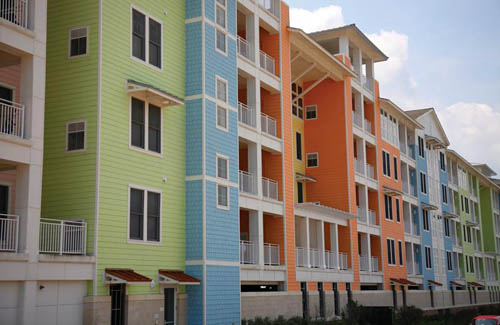
Government to provide interest subvention for housing loans
Track2Realty-Agencies: The government has said it will offer interest subvention on housing loans to make it more affordable for the poorer sections of the society to own a house.

Track2Realty-Agencies: The government has said it will offer interest subvention on housing loans to make it more affordable for the poorer sections of the society to own a house.

The government on Monday said low-cost housing loans of Rs 15 lakh will be eligible for one per cent interest subsidy, which will help in increasing the demand for such housing.

With home loan interest rates below 7 per cent, an impression has gained ground that this is the best time to buy a house. Track2Realty takes a closer look at the economic fundamentals that suggest the interest rates are one of the sales catalysts and there are many variables to consider.

No one has got a clear answer to the core of the problems and every industry stakeholder has his own point of view. However, the economies of scale suggests it definitely helps the developers to undertake cost-effective measures since material procurement happens at a group level. This gives large developers an advantage over other smaller developers and projects. Also, the duration of construction has an impact on the cost. The developers must ensure the completion of projects on time, which could help us sell the properties at a faster pace and keep the cost under control.

The report of an impending housing recession in the US housing market is a worrying factor for a section of analysts in India. As per the reports coming out of the US market, the pricing remains firm but the sales have slowed down. As per a report by the NAR (National Association of Realtors), the home sales have slowed down for six consecutive months in July. Track2Realty reports.

I meet a number of stakeholders across the built environment of Indian real estate. One common narrative that has gained ground within the built environment over the years is that “this is the best time to buy a house.” Mind you! This narrative was being pushed through the throat even before Covid. Even though the real estate market in general and the housing market in particular has been going through a turbulent phase, the narrative has never changed its course.

The statistics are scary for any salaried class across the cities of India who has an EMI to pay for his home purchase. The Indian Chamber of Commerce has estimated that the real estate would be witness to 65% defaults from the buyers of under construction projects due to Coronavirus hit lockdown. The estimation is not without its logical reasons. A CII snap poll of the CEOs finds that 52 percent of the companies surveyed foresee job losses, in their respective sectors.

Indian real estate is still a viable and fairly safe long-term investment option. Investors with a short-term view on ‘instant returns’ need to look elsewhere, but most other asset classes are quite volatile in nature and will continue to remain so. Indian residential real estate is a long-time favourite of resident Indians and NRIs, and recent trends suggest a positive outlook for this asset class going forward. Property prices have bottomed out and cannot possibly reduce further, especially since construction costs are gradually heading north.

In the ‘golden years’ of India’s housing market, property was the default go-to option for big-ticket investment. With real estate’s fading allure, investors began exploring other options and found them to quite rewarding. For instance, they can invest in a start-up with sums as ‘low’ as INR 10 lakhs. Many entrepreneurially-inclined Indians find the potential ROI (as high as 15% in many instances) makes more sense. Mutual funds provide good returns and the entry level is low enough to be affordable to many.

Some of the popular subvention schemes at the time included 20:80 or 25:75 payment plans wherein buyer paid 20-25% upfront while the developer paid the remaining 80% to the lending HFCs or banks on behalf of the buyer, until possession. The 5:90:5 scheme was the most common one on offer.
